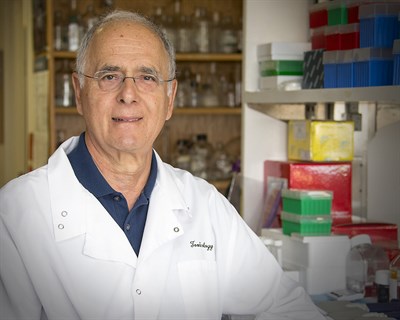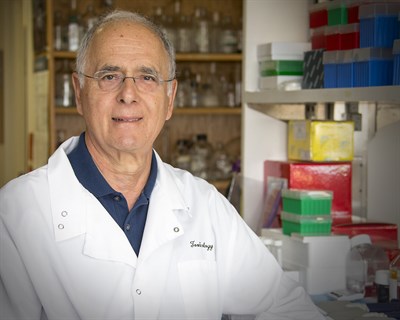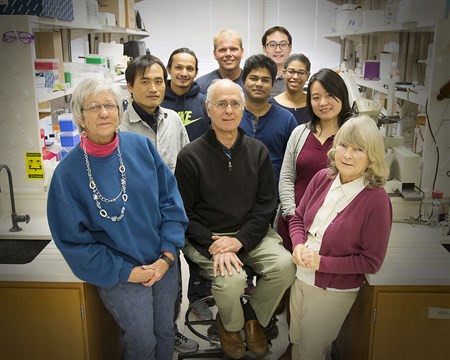It’s Safe to Say–Impact Begins at Discovery
Discovery and the unexpected—these are recurring themes in the research career of Dr. Stephen Safe, a distinguished professor at the College of Veterinary Medicine & Biomedical Sciences (CVM). Trained as a chemist, Safe eventually found himself studying toxicology and examining the biochemical mechanisms of cancer with the hopes of developing effective drug treatments.


Safe looks at receptors, a molecular lock to which chemical signals are the keys. When these chemical signals bind to the receptor, or turn the metaphorical key, it leads to a Rube Goldberg–like process, where one action affects another and then another, ultimately powering various biological processes.
“Receptors are needed for life,” Safe said. “They are sensing molecules. They sense light. For example, you need sunlight to produce Vitamin D. What does Vitamin D do? It would do nothing if there wasn’t a Vitamin D receptor.”
And, it all started with a single receptor—the aryl hydrocarbon, or AH, receptor. Known to play a role in a chemical’s toxicity in the body, the AH receptor was not known for its health benefits. However, research trends led Safe and his colleagues to suspect that this receptor’s function was far from black and white. There were, in fact, health benefits yet to be uncovered.
“I started off working on toxic compounds that bound to the AH receptor. It was always thought to be a receptor that was important for driving toxicity of various chemicals that bound to it,” Safe said. “Many people have discovered in the last 20 years that this receptor plays a huge role in all sorts of things, including the health of your gut, the health of your skin, and autoimmune diseases. We’ve been looking at ligands—or compounds that bind this receptor—that aren’t toxic. We’re using them for treating cancers, and investigating the heath benefits of the receptors in gut microbiota.”
Excited by the possible health benefits associated with the AH receptor, Safe began looking for practical solutions to ailments such as pancreatic cancer. Through partnerships with pharmaceutical companies, Safe is working toward developing effective drug treatments that would specifically focus on receptors like the AH and NR4A1 receptors to promote pathways that prevent cancer growth. “We’ve got a new group of drugs that look like they’re really going to knock your socks off,” Safe said.

Safe’s interest in the AH receptor has stimulated an interest in other receptors, such as NR4A1, which Safe and his colleagues are investigating for the treatment of multiple cancers including rhabdomyosarcoma—a devastating children’s cancer. “We think the AH and NR4A1 receptors are really important in cancer, and we’ve been developing drugs that target them through different pathways,” he said.
Developing these drugs can be a balancing act, looking for the appropriate dose to ensure effectiveness. “We’re trying to develop drugs that we can give at a much lower concentration to hopefully be below the toxic threshold. We think that they have relatively low toxicity and expect that the side effects will be minimal. In addition, they’re also useful for combination therapies.”
Safe’s fascination with the AH receptor has caused his research to take an unexpected turn. In collaboration with other researchers at Texas A&M, he is focusing on the effects of microbial and food-derived AH-receptor compounds on gut health. For example, eating cruciferous vegetables, such as cabbage, could provide similar effects as the compounds acting on the AH receptor. “Maybe plants that produce a lot of AH receptor compounds, like cruciferous vegetables, which are known to be health-protective, could be combined with what the microbiota produces. The two in combination could be dynamite,” he said.
The twists and turns of Safe’s research has led to continuous learning and a deep curiosity. “The good thing for me is I started off as a chemist and all we do in my lab is oncology and molecular biology. So, I’m learning all the time,” he said. Beyond the AH receptor discovery, Safe continues to search for much needed practical, life-saving therapies.


